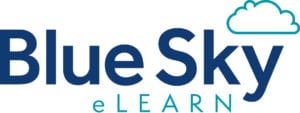The topic of engagement is quite the buzz in the learning world. And that’s because we can all probably agree that if our learners aren’t engaged, they likely aren’t reaching their full potential as learners. So the question is, how do we design truly engaging learning experiences?
Tracy King, founder of InspirEd and Aaron Wolowiec, founder of Event Garde, are both experts in learning design and they recently joined forces to help answer this complex question. Their research and findings related to the topic are captured in the e-book they co-authored, Engaging Learners: A Guide To Successfully Designing Engaging Learning.
In this episode of the Leading Learning podcast, Celisa talks with Tracy and Aaron about the topic of learner engagement—including what it is and, just as importantly, what it isn’t—how to prime learners for engagement, and the importance of “constructing” learning experiences versus “manufacturing” them.
To tune in, just click below. To make sure you catch all of the future episodes, be sure to subscribe by RSS or on iTunes. And, if you like the podcast, be sure to give it a tweet!
Listen to the Show
Read the Show Notes
[00:18] – Thank you to Blue Sky eLearn, sponsor of the Leading Learning podcast for the first quarter of 2018. Blue Sky is the maker of the Path learning management system, an award-winning, cloud-based learning solution that empowers your organization to maximize its message. Blue Sky also provides a range of virtual event and instructional services to help you maximize your content and create deeper engagement with your audience. To find out more about Blue Sky eLearn and everything it offers, visit https://www.blueskyelearn.com.
[01:23] – Highlighted Resource of the Week – Engaging Learners: A Guide To Successfully Designing Engaging Learning – an e-book by Tracy King and Aaron Wolowiec
[01:49] – A preview of what will be covered in this podcast where Celisa interviews Tracy King, founder of InspirEd and Aaron Wolowiec, founder of Event Garde.
[03:08] – Introduction to Tracy and Aaron.
[03:50] –Tracy shares information about her background and work.
[04:45] – Aaron shares information about his background and work.
[06:10] – You co-authored the e-book Engaging Learners: A Guide To Successfully Designing Engaging Learning. Tracy, what sparked this project? What got you and Aaron interested in learner engagement, and what led to this publication? Tracy shares that she and Aaron had a lot of conversations over the years about influencing a shift in association education from unilateral information delivery to transformational learning experiences and design. The real impetus for this project came one day when they were in a session about engagement strategies when they realized there was a need for clarification on what learner engagement really is—and the need to then craft intentional experiences that engage learners and lead to actual skill and knowledge development. They first designed a survey to flesh out both the understandings and misunderstandings within their community and that inspired their e-book.
[08:01] –Aaron, how do you define and describe learner engagement? Aaron says before digging into the definition of learner engagement, it’s important to first talk about what isn’t learning engagement. As learning professionals, we’re often eager to get on to the next event, conference, project, etc. and we often look for the quick opportunities/wins. In many cases, it’s easy to make a checklist of things that speakers assume if they hit on, they will be engaging learners, but in fact, most of the things on that checklist aren’t engagement at all. What they found in their research is the “mythconception” that people think they do one or more of those types of things, that qualifies as learner engagement. Aaron and Tracy try to offer an alternative to include things that are more intentional and thoughtful. According to Tracy and Aaron, learner engagement is comprised of three areas:
- Active partnerships with the learner
- Personalization of content – simple exposure to new content isn’t enough
- Application and behavior change
[12:05] – You quote from Make It Stick in your e-book, and I had the pleasure of interviewing one of the authors, Peter Brown, for this podcast, as Make It Stick is a book we emphatically recommend. And the part you quote is, “The responsibility for learning rests with every individual.” Learner responsibility is something we at Tagoras have been promoting for a while, and I know it’s something you preach too, as that learner responsibility is necessary for learner engagement. Tracy, do you have suggestions for how learning providers and facilitators can prime learners to assume the responsibility they have for their own learning? Tracy says there are several things we can do:
- Start by designing learning experiences with a target audience in mind.
- Clearly communicate the intended objectives and the learner level for each session and course.
- Communicate to learners that you are partners with them in their learning journey.
- Whenever you can, give learners something to think about, consume, or self-assess in advance of the experience so you are priming them for where the conversation is going to pick up.
- Choose interactive learning formats that actually support learning objectives—this shifts learners from passive to an active learning mode, which is critical.
- Realize it’s our responsibility to create an environment that’s conducive to learning, to design an experience that supports the objectives that we set forth—but recognize that the learner has to choose to be in it to win it with us.
[15:50] – A manufacturing vs. construction metaphor for learning runs through the e-book. Aaron, would you share what the manufacturing/construction distinction means in terms of learning? Aaron explains how with manufacturing – using the example of his dad working in a car manufactory – quality control is really about how things are similar rather than how things are different. However, with construction, he talks about the idea of people starting to build and customize their own homes rather than buying a home that looks just like all the others in a neighborhood. As we think about manufactured learning experiences, it’s about events that really resemble one another with no defined mission or audience—and if there is, it’s very broad. Aaron says we aren’t really setting ourselves up for success when we manufacture learning because it’s not about how many events we can churn out, but really how we can identify the specific audiences we have and their specific needs—and then build or architect an experience upon that. As we think about constructing learning experiences, he says it’s about identifying who our audience is and understanding and articulating their personas, understanding what the mission statement is for that event, setting learning goals accordingly, building learning engagement on top of that, and really defining a unique value laden experience for our members.
[19:47] – It’s not something you go into deeply in Engaging Learners, but in talking about constructing learning experiences (vs. manufacturing them), you talk about learning personas. Tracy, would you talk a little about how learner personas can be developed and how they feed into the work of engaging learners? Tracy emphasizes that understanding your audience is a core step in any learning design, project or process, so to pause and take the opportunity to really understand who you’re targeting with a program is fundamental to designing the right program. She often tells colleagues and clients that if you work for an association, you’re marketing and membership teams probably have a head start on you because they’ve probably already started to develop personas for your primary and secondary audiences that you can begin to leverage. She reiterates that it’s critical to understand the level of the learner that we’re designing an experience for because one size does not fit all. When working with associations interested in expanding their programming online, she often asks, What’s the tech profile of your target learners on a scale from comfy to terrified? This opens up a clarifying conversation about who we are targeting with this online learning experience and what types of support they will need. Understanding the profile of our target learner helps us design an experience that inspires this powerful response: This is for me. You know me. This is what’s going to keep our learners coming back again and again and is what drives loyalty among our customer bases and what differentiates us in our competitive markets.
[23:20] – What’s the top thing you’d like listeners to take away about learner engagement? Aaron reveals it’s to simply start the conversation—if you’re going to wait as a learning professional/organization for that perfect opportunity, situation, etc., there’s never going to be time and you’re never going to have that conversation. Their hope is that folks will share the e-book with anyone in their organization who might find it interesting to just start the conversation. Tracy adds that engagement is possible—one of the things they noticed in many of comments in the surveys is there an overwhelmed feeling among the learning professionals in the association industry around engaging learners. The e-book provides concrete steps to help with this and Tracy and Aaron say they are available to help as well.
[26:58] – Did either of you have any “aha’s” or anything that surprised you as you worked through this project? Tracy reveals some of the biggest surprises were in the survey data—she expected there to be some misunderstandings but some of the major obstacles were around what next steps to take. This really stirred a passion in her and Aaron to ensure they weren’t just offering concepts and ideas but real practical next steps for infusing learning sessions and online learning with meaningful interaction—which is why they have the tips and traps section in the e-book. Aaron talks about the idea of mimicry. Mainly, when you’re trying to mimic someone else, you need to really understand why it works and the theory behind it in order to be successful.
[31:28] – What is one of the most powerful learning experiences you’ve been involved in, as an adult, since finishing your formal education? Tracy shares a recent and powerful learning experience she was involved in with the Kirkpatrick Four Levels® Certification Program. Aaron, talks about one of his most powerful learning experiences being around a course he gets to facilitate each year with the Michigan Society of Association Executives.
[37:57] – How to connect with Tracy and Aaron and/or learn more:
Aaron –
- Website: https://eventgarde.com/
He also notes that he and Tracy will have a big announcement later this year so stay tuned
Tracy –
- Website(s): https://www.inspired-ed.com/ or https://tracy-king.com/
[39:03] – Wrap Up
If you are getting value from the Leading Learning podcast, be sure to subscribe by RSS or on iTunes. We’d also appreciate if you give us a rating on iTunes by going to https://www.leadinglearning.com/itunes.
We’d also be grateful if you would take a minute to visit our sponsor for this quarter, Blue Sky eLearn. In addition to finding out about their services, you will also find a variety of great resources that they offer for free.
Also, consider telling others about the podcast. Go to https://www.leadinglearning.com/share to share information about the podcast via Twitter, or send out a message on another channel of your choosing with a link to https://www.leadinglearning.com/podcast.
[40:56] – Sign off
See also:



 Hard Conversations and the Multigenerational Workplace with Jennifer Abrams
Hard Conversations and the Multigenerational Workplace with Jennifer Abrams
Leave a Reply